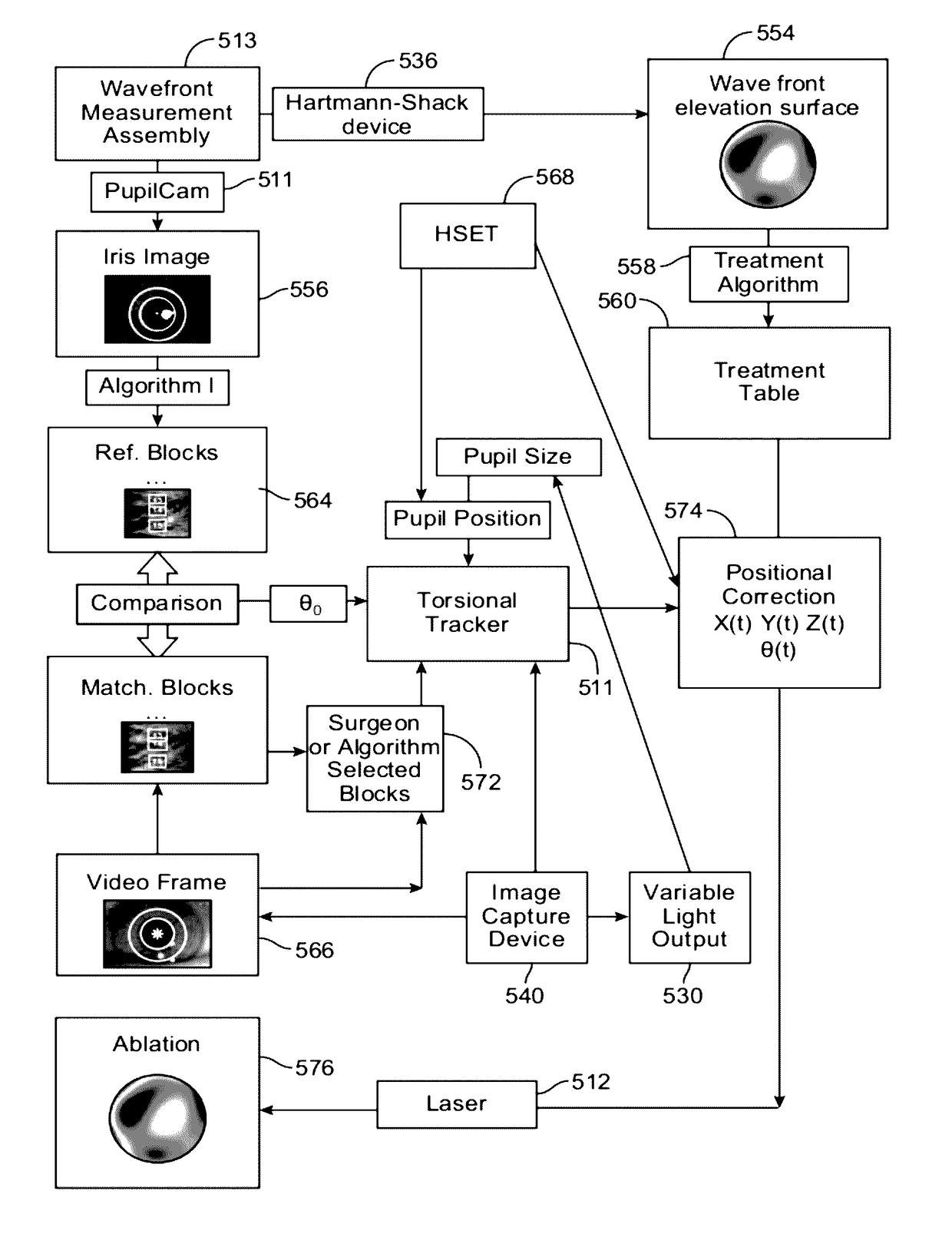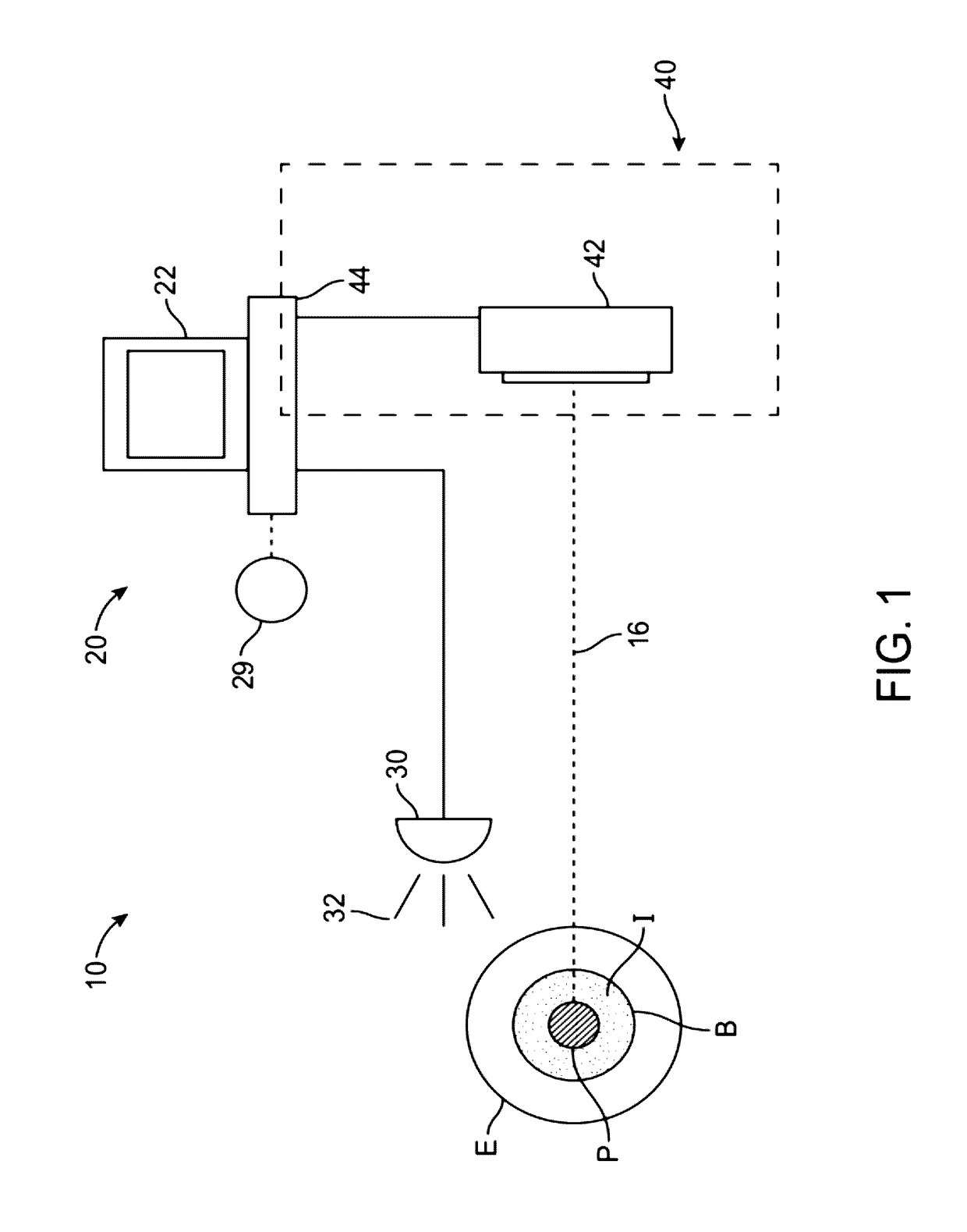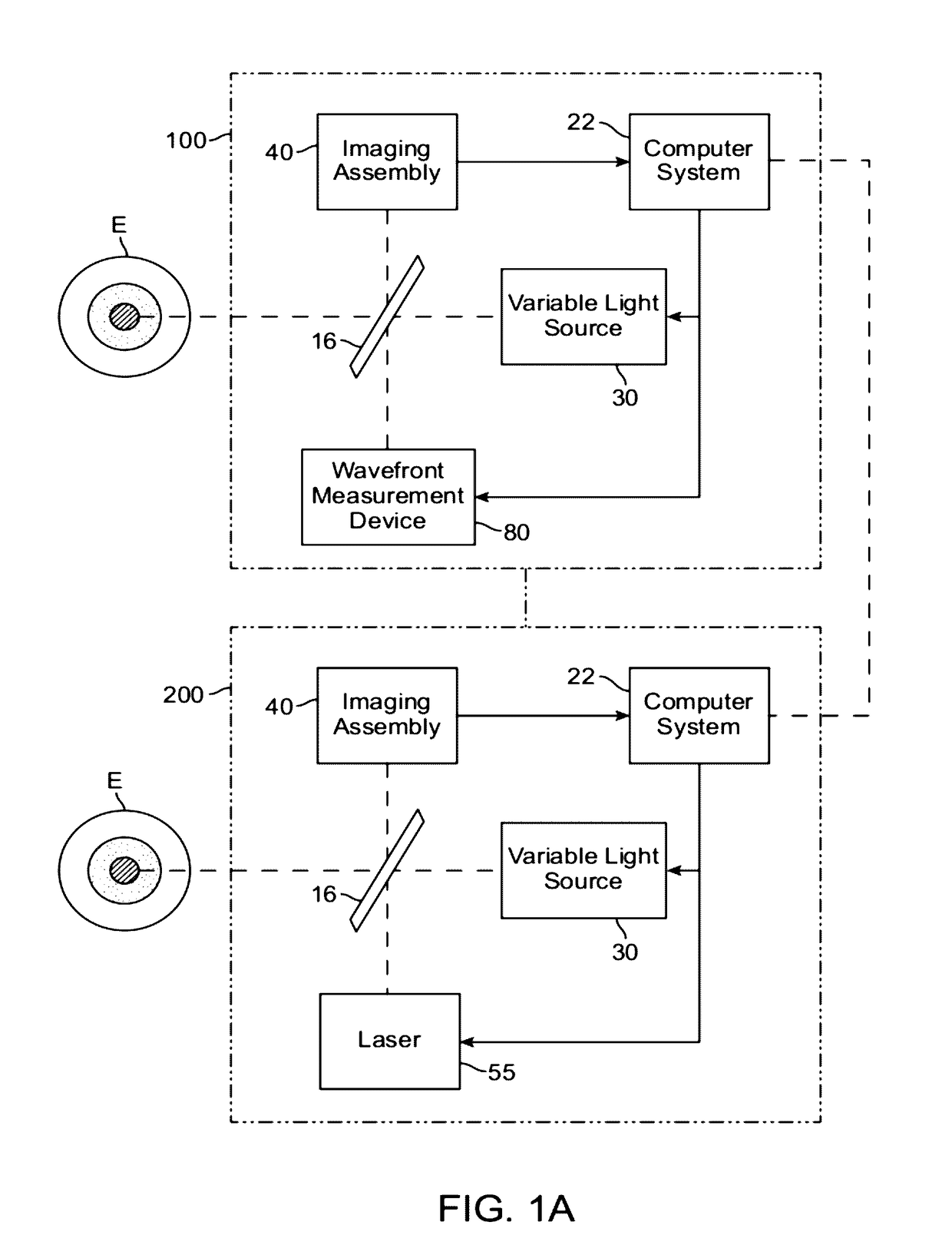System and methods for mitigating changes in pupil size during laser refractive surgery to maintain ablation centration
a technology of ablation centration and laser refractive surgery, which is applied in the field of systems and methods for diagnosing and/or treating vision in, can solve the problems of increasing the cognitive load experienced by the patient during the procedure, affecting the pupil size, and changing the optical distance of the viewing target, so as to improve eye tracking and alignment, the effect of not significantly changing the pupil size and increasing the cognitive load
- Summary
- Abstract
- Description
- Claims
- Application Information
AI Technical Summary
Benefits of technology
Problems solved by technology
Method used
Image
Examples
Embodiment Construction
[0036]The present invention generally provides improved devices, systems, and methods for mitigating changes in pupil size during a diagnostic and / or treatment procedure of the eye, particularly during laser eye surgery procedures. In an exemplary embodiment, the invention provides a pupilometer capable of identifying changes in pupil size, an illumination source having a variable optical light output, and a processor. The pupilometer often calculates changes in pupil size, typically by comparing a time-sequence of images of the eye obtained by an image capture device. In response to the calculated change in pupil size, the processor determines a desired optical light output sufficient to induce a desired pupillary response so as to mitigate the calculated change in pupil size. The processor then sends command signals to the variable optical output which directs the desired optical light output to the eye so as to induce the desired pupillary response. Ideally, this process is perfo...
PUM
 Login to View More
Login to View More Abstract
Description
Claims
Application Information
 Login to View More
Login to View More - R&D
- Intellectual Property
- Life Sciences
- Materials
- Tech Scout
- Unparalleled Data Quality
- Higher Quality Content
- 60% Fewer Hallucinations
Browse by: Latest US Patents, China's latest patents, Technical Efficacy Thesaurus, Application Domain, Technology Topic, Popular Technical Reports.
© 2025 PatSnap. All rights reserved.Legal|Privacy policy|Modern Slavery Act Transparency Statement|Sitemap|About US| Contact US: help@patsnap.com



